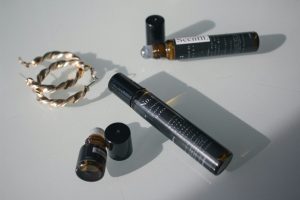Self-Healing Fabrics: Will Your Clothes Repair Themselves?
In today’s fast-paced world, where fashion trends change in the blink of an eye, investing in clothes that last longer is imperative. Imagine having a pair of jeans that never wears out or a shirt that never stains. Sounds too good to be true, right? Well, thanks to the advancements in textile technology, self-healing fabrics are now a reality. These innovative materials not only have the potential to extend the lifespan of our clothes, but they also have the ability to repair themselves. Yes, you read that right – your clothes might soon be able to repair themselves, giving a whole new meaning to the phrase “wardrobe malfunction.” 
The Rise of Self-Healing Fabrics
The concept of self-healing fabrics has been around for quite some time, but it is only in recent years that it has gained significant attention and progress. The inspiration for self-healing textiles comes from nature itself. Just like how our skin heals itself when wounded, researchers have been studying how certain organisms, like fungi and bacteria, have the ability to heal themselves. By imitating these natural processes, they have developed fabrics with the potential to mend themselves.
How it Works
Self-healing fabrics are made with different types of microcapsules and enzymes that react to different types of environmental stressors. For instance, if the fabric gets damaged due to a snag or a tear, the microcapsules containing a healing agent ruptures and releases it onto the damaged area. The healing agent then bonds with the fabric, creating a strong and flexible repair. In some cases, the enzymes in the fabric can also activate a process called polymerization, which results in the formation of a new layer of material at the damaged spot, making it virtually undetectable.
The Benefits of Self-Healing Fabrics
The most obvious benefit of self-healing fabrics is that they prevent the need for constant repairs or replacements. This not only saves time and money but also reduces the amount of waste generated in the fashion industry. With fast fashion being one of the leading causes of environmental damage, self-healing fabrics could potentially be a more sustainable option in the long run. Moreover, these fabrics are also more durable and can withstand everyday wear and tear, making them a practical and desirable choice for consumers.
The Challenges
While self-healing fabrics hold immense potential, there are still some challenges that need to be addressed before they become widely available in the market. One of the major hurdles is the cost of production, which is currently quite expensive due to the use of advanced materials and technology. There is also a need to ensure that these fabrics are biodegradable and environmentally friendly, as using harmful chemicals in the production process could negate its sustainability benefits.
The Future of Self-Healing Fabrics
Despite the challenges, it is evident that self-healing fabrics have the potential to revolutionize the fashion industry. It may even open up possibilities for other applications beyond clothing, such as in the automotive or aerospace industries, where the need for durable materials is crucial. As research and development in this field continue, we can expect to see more and more innovative products made with self-healing fabrics hitting the market.
The Final Verdict
Self-healing fabrics may sound like something out of a science fiction movie, but they are slowly becoming a reality. While we may not have clothing that can fully repair itself just yet, the progress made so far is promising. With the rise in demand for sustainable and durable fashion, it won’t be long before self-healing fabrics become a staple in our wardrobes. So, don’t be surprised if in the near future, your clothes are able to mend themselves, making you look stylish and saving you a trip to the tailor. It’s an exciting future for the world of fashion, and we can’t wait to see what’s next.











